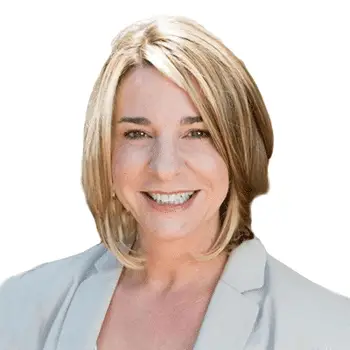Bipolar disorder is a mental health and brain condition characterized by alternating episodes of mania and depression. Manic episodes involve high energy, almost frenetic at times, elation, and sometimes reckless behavior like gambling or risky sex. Depressive episodes manifest themselves in low energy, hopeless feelings, and difficulty being motivated to do anything. Some bipolar individuals try to hurt themselves during depressive episodes. According to the American Psychological Association, bipolar disorder affects more than 4% of Americans.
Symptoms of Bipolar Disorder
The American Psychiatric Association suggests that bipolar disorder involves dramatic shifts in mood. In the classic form of the disease, people shift from an extremely happy state to an extremely low state, and then back again.
That happy state is known as mania, and it’s a form of joy and energy that’s almost unheard of in people who don’t have a mental illness. During the manic stage, people experience:
- Delusions of grandeur
- A sense of power or invincibility
- Bursts of creativity
- Recklessness
- Rapid thoughts
- Insomnia
The depressed phase that follows is the polar opposite of mania. Rather than feeling strong, powerful, and invincible, people in the depressed phase can feel:
This Season, Give Yourself the Gift of a Fresh Start.
Whether you are struggling with addiction, mental health or both, our expert team is here to guide you every step of the way. Don’t wait— reach out today to take the first step toward taking control of your life.
- Exhausted
- Worthless
- Helpless
- Hopeless
- Unable to concentrate
- Suicidal
A person with a classic form of bipolar disorder might experience slow shifts between these moods on a regular basis, but there are all sorts of bipolar variations out there. Some people feel only the depressed part of bipolar disorder, shifting in and out of high and low feelings of despair without ever feeling good. Some people feel only mild mania and intense depression, and some people feel both mania and depression at the same time.
Challenges of Bipolar Disorder
The National Institute of Mental Health suggests that about half of all people with bipolar disorder feel symptoms starting before age 25. Without treatment, the disorder tends to get worse with time.
In some people, the symptoms tend to intensify over time. The manic symptoms they feel seem to grow stronger and stronger, and the steps they take while in the midst of a manic episode grow more and more dramatic. People like this might binge on drugs, commit crimes, or harm the people they love, all while under the influence of mania. During the depressive stage, people might grow ever more suicidal, and they might have suicide attempts.
It can be very difficult for people who suffer from bipolar disorder to hold down jobs, because they can’t be sure of the way they’ll feel from one day to the next. Accepting jobs with responsibility can be tricky, because these people may not be sure that they can handle those tasks if mania or depression hits. Without jobs, people like this can have less of a chance at secure housing and financial security.
Bipolar disorder isn’t something that people can ignore, but with treatment, things can get so much better.
Bipolar Disorder and Substance Abuse
Studies have shown that it is common for substance use disorder to co-occur with bipolar disorder, with more than 40 percent of those with bipolar disorder also misusing alcohol, 20 percent misusing cannabis, and smaller percentages misusing various other drugs.
While men and women develop bipolar disorder at roughly equal rates, more men than women have co-occurring substance use disorder with bipolar disorder. Those with co-occurring bipolar and substance use disorders typically have an earlier onset of the bipolar disorder, on average about 20 years old rather than 24 years old.
Both varieties of bipolar disorder — the second of which is milder — are equally associated with substance use disorder. The way these two disorders interact and influence each other is complex and makes them particularly difficult to treat successfully.
Bipolar Disorder and Co-Occurring Addiction
People with bipolar disorder are at severe risk of developing co-occurring addictions. That’s because drugs might not seem dangerous or capable of hurting them while they’re in the midst of a manic episode. During the depressive phase, drugs can actually seem helpful in boosting the mood. So people with bipolar disorder might take more drugs than others do, and they might develop addictions as a result. So any program for bipolar disorder should include an assessment for drug use, and therapies should be used to help people to overcome that drug use.
Cause and Effect
Treatment professionals are unsure which of these co-occurring disorders causes the other or whether cause and effect is even part of the picture. In some cases, it seems that the early symptoms of bipolar disorder may cause sufferers to misuse substances in an attempt to self-medicate and get back to a point of equilibrium.
On the other hand, the brain changes that often take place when substances are misused during formative years could lead to a prevalence of bipolar disorder among those with substance use disorder. Differences between men’s and women’s brains could account for the greater likelihood of substance use disorder in men who are also bipolar.
Another difference observed between men and women with bipolar disorder is that men are more likely to have mania and to act out their psychological state than women. For these reasons, more men than women may initially decide to misuse substances, behavior that later turns into a substance use disorder. Men are also 10–15 percent more likely to commit suicide, which should be considered when treating these disorders.
Unraveling the plausibilities in each situation can lead to greater understanding and help those with co-occurring disorders to respond better to treatment opportunities, leading to better treatment outcomes.
Dual Diagnosis Treatment Program
When you suffer from both bipolar disorder and substance abuse, you may not realize how much both impact your life and may be in denial about the real, negative effects these conditions have on you. When these negative effects begin to compound in your life, they often cause broken relationships, financial difficulties, or health problems that can no longer be ignored.
The complexity and interrelationship between bipolar disorder and substance abuse make inpatient or partial hospitalization the best option for treatment, but a treatment professional will be able to tell you what treatment options will most help you overcome your addiction and mental health condition.
It is impossible to treat just bipolar disorder or substance abuse when the two co-occur because they become intertwined and affect each other in complex ways. In Colorado rehab, these co-occurring disorders are treated together in order for both to be managed in the best possible way.
In a dual diagnosis treatment program, people have the opportunity to understand the subtle shifts in emotion that they feel on a regular basis. They may never stop these shifts altogether, but they might learn techniques that can help them to reduce the severity of the swing. Instead of acting out in ways that might be dangerous, they might learn to meditate, exercise, create, or otherwise handle those feelings and work through them, so they can pass through on the other side in safety.
Recovering from Co-Occuring Bipolar Disorder & Substance Abuse
As the National Alliance on Mental Illness points out, recovery from bipolar disorder tends to be a process, not an event. People with this illness need to take things slowly and learn over time, and the techniques they might apply can shift as their lives shift. Aftercare is vital for people with bipolar disorder, as a result, because they might need help that lasts for much longer than a standard addiction treatment program does.
The staff of The Recovery Village at Palmer Lake understands this quite well. That’s why treatment programs are designed with aftercare in mind. People have the chance to learn in the acute portion of the program, and they use aftercare therapies to stay on track in the months and years that follow acute care.
A Multidisciplinary Approach to Treatment
The multidisciplinary treatment approach combines medical and psychological professionals and addiction specialists that all work together to address aspects of the disorders. Multidisciplinary treatment can be necessary for co-occurring disorders that include bipolar disorder because medication and counseling are often both needed to stabilize the bipolar behaviors.
Most treatment options involve individual and group therapy as well as other treatment methods. Family therapy may be involved. Treatments are individualized to meet specific needs, which can be more complex and individualized when disorders co-occur.
The Recovery Village at Palmer Lake offers treatment for co-occurring disorders including bipolar disorder that co-occurs with substance abuse using individualized, multidisciplinary methods that can get you or a loved one on the road to a stable recovery. Contact us today to discuss how we can help.









